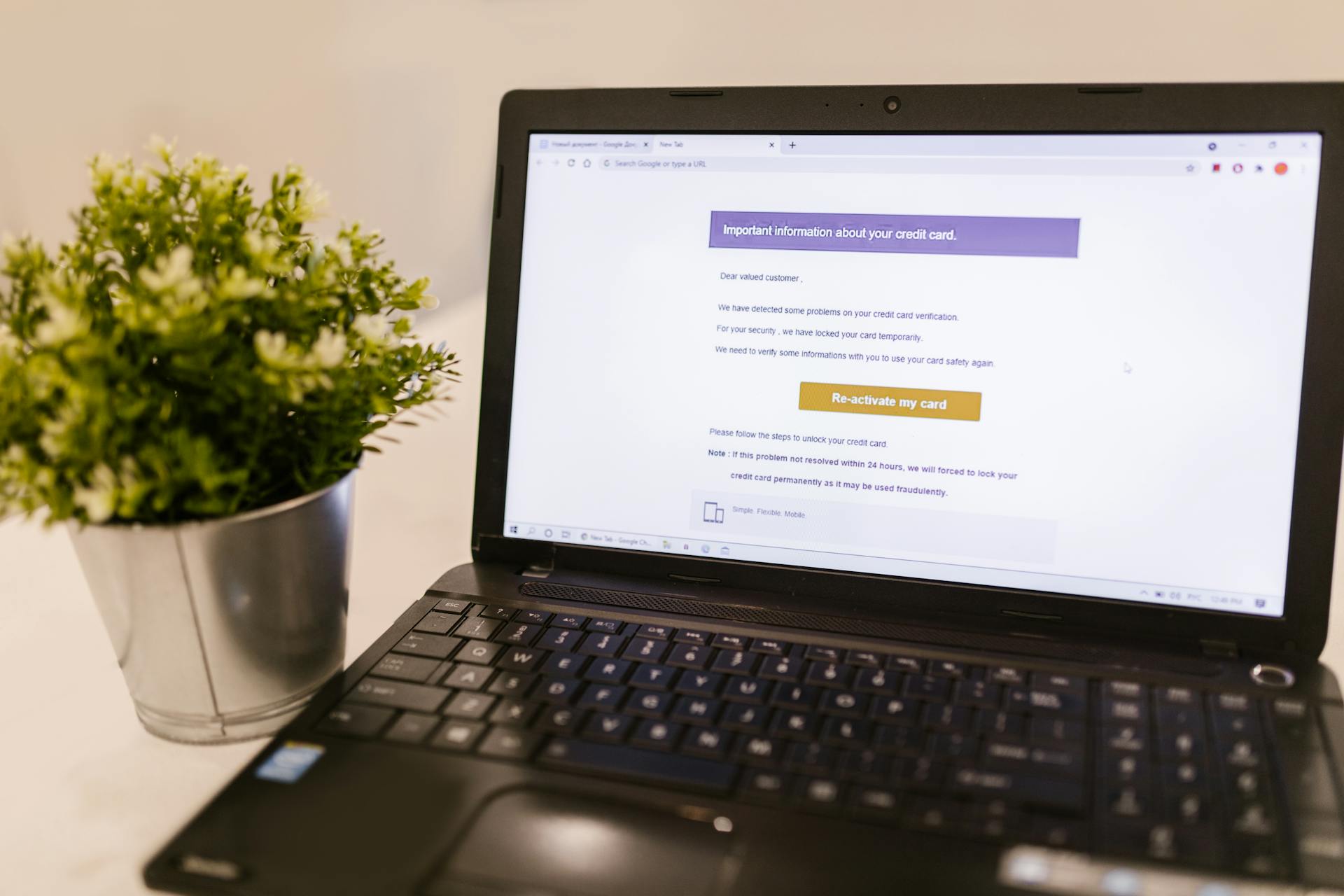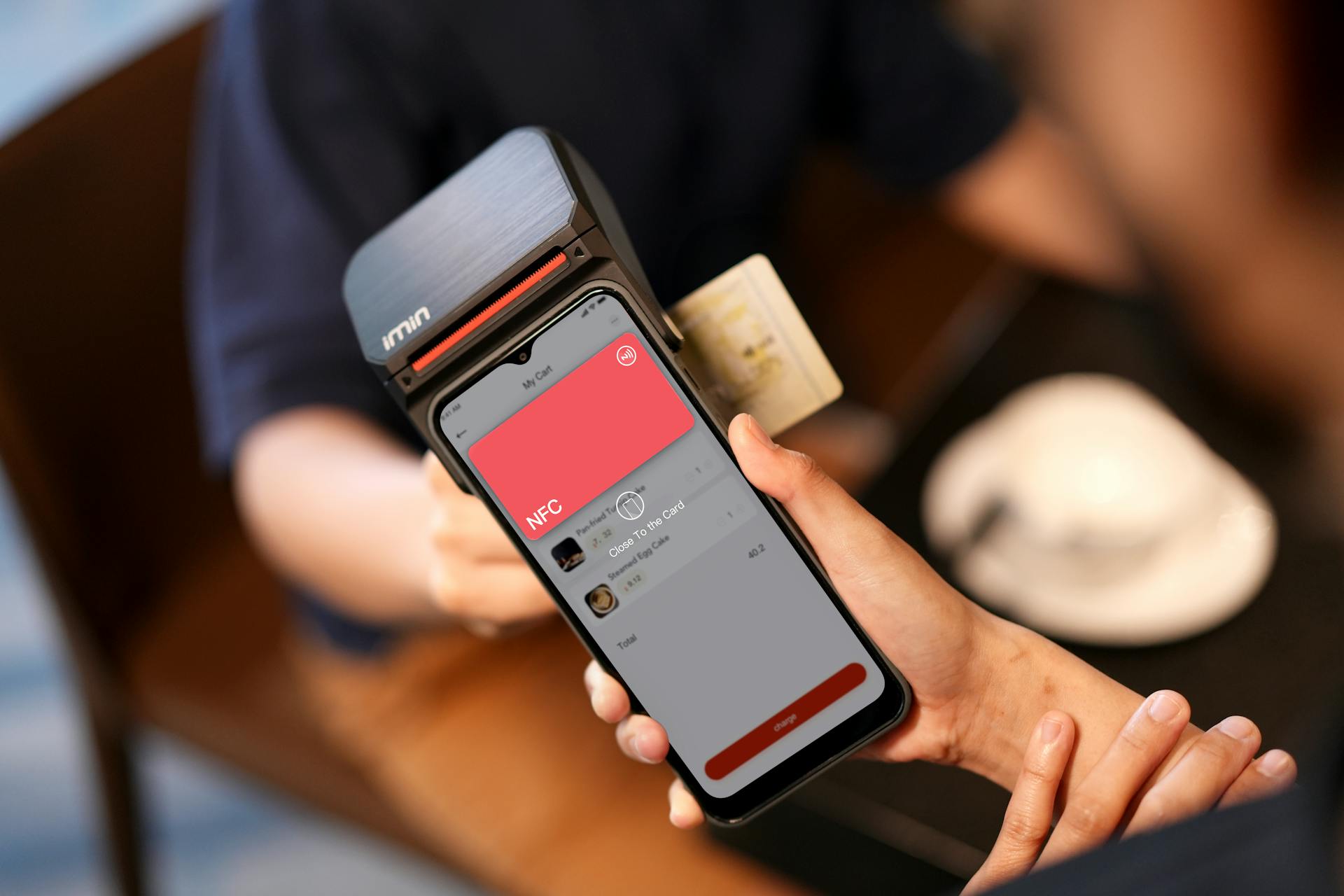
A Standby Letter of Credit (SBLC) is a type of financial instrument that provides a guarantee of payment to a beneficiary. It's essentially a promise from a bank that they'll cover a loan if a borrower can't pay.
An SBLC is typically used for large transactions, such as international trade. It ensures that the buyer can obtain payment from the seller even if the buyer defaults on the loan.
The bank issuing the SBLC is responsible for paying the beneficiary if the borrower fails to meet their obligations. This adds an extra layer of security and reduces the risk for the beneficiary.
In essence, an SBLC is a safeguard against non-payment, providing peace of mind for both parties involved in a transaction.
Readers also liked: Collateralized Loan Obligations 2020
What is an SBLC?
An SBLC is a payment guarantee issued by a bank or financial institution through a SWIFT MT760 message. It's used as payment for a client in case the applicant defaults.
On a similar theme: Post Payment Meaning
A Standby Letter of Credit (SBLC) can be utilized in various financial and commercial transactions. It's similar to a Documentary Letter of Credit (DLC), but only becomes usable if the applicant defaults.
The SBLC protects the seller/exporter by ensuring they get paid. It also protects the buyer/exporter in case the seller doesn't ship the goods as agreed upon in the contract.
A SBLC requires the presentation of specific documents agreed upon in the terms and conditions of the SBLC. Without these documents, payment cannot be made.
A Standby Letter of Credit guarantees a bank's commitment of payment to a seller in the event the buyer defaults on the agreement.
Curious to learn more? Check out: Payoff Credit Cards
Benefits and Advantages
Having a Standby Letter of Credit (SBLC) can be a game-changer for businesses, especially small ones. It provides a safety net in case something goes wrong.
The biggest advantage of an SBLC is that it guarantees payment to the seller, even if the buyer doesn't pay. For example, if a contract calls for payment within 30 days of delivery and the payment isn't made, the seller can present the SBLC to the buyer's bank for payment.
An SBLC also reduces the risk of the production order being changed or canceled by the buyer. This is especially important for sellers who have already invested time and resources into a project.
Another benefit of an SBLC is that it adds credibility to a small business's bid for a project. It can help level the playing field against bigger and better-known rivals.
An SBLC can also help small businesses avoid upfront payments to the seller. This can be a significant advantage, especially for businesses that are just starting out.
Having an SBLC can increase the certainty that the goods will be delivered from the seller, especially in global trade. This is because the buyer can present the SBLC to the bank to ensure payment.
Cost and Payment
A Standby Letter of Credit, or SBLC, comes with costs that need to be considered. These costs typically range between 1% and 10% of the total guaranteed price for each year the SBLC is active.
Banks will assess the creditworthiness of the applicant, similar to a loan application. This evaluation will impact the fees charged for the SBLC.
The annual fees for an SBLC can be as high as 10% of the total amount, depending on the risks involved.
Cost Estimate
Banks charge between 1% and 10% of the total guaranteed price for each year that a Standby Letter of Credit (SBLC) is active.
These fees are a result of the bank taking a risk by offering an SBLC.
The charges are applicable as long as the SBLC is valid, and they're a percentage of the total SBLC amount, not a flat fee.
Banks will assess the creditworthiness of the applicant much like a loan application, which affects the fees they charge.
The annual fees for an SBLC can range from 1% to 10% of the total SBLC amount, depending on the risks and the amount involved.
Means of Payment
A Standby Letter of Credit is a reliable means of payment in international trade deals. It's used when the seller feels the buyer may have problems paying for goods received.
The buyer requests their bank to open a Standby Letter of Credit in favour of the seller. The seller ships the goods to the buyer, and if the buyer pays, the SBLC is cancelled and returned to the issuing bank.
See what others are reading: Credit Card Definition Economics
If the buyer fails to pay, the seller can claim the sum owed against the Standby Letter of Credit. The issuing bank will pay the seller and claim the same from the buyer.
This payment method reduces the risk of non-payment for the seller. It's especially useful in global trade, where there's a higher risk of non-payment.
A Standby Letter of Credit also adds credibility to a small business's bid for a project. It can help avoid upfront payments to the seller and increase the certainty that goods will be delivered.
You might enjoy: Non Recourse Sblc
Advance Payment
Advance Payment is a type of payment where one party pays the other party in advance of the actual work or delivery of goods. This type of payment is often used in international trade to secure a deal.
Advance Payment Standby LC provides security against one party's failure to pay the other party's advance payment. This is a crucial aspect of advance payment, ensuring that the receiving party is protected in case the paying party defaults.
Advance payment can be a risk for the paying party, as they may not receive the goods or services they paid for.
Worth a look: What Type of Instrument Is Cashier's Check Bearer
Direct Pay
Direct Pay SBLCs can act as a security in the instance of financial instability of the applicant. They are irrevocable.
A Direct Pay SBLC is essentially a guarantee of payment, similar to a Demand Bank Guarantee. It's governed by the ICC Uniform Rules for Demand Guarantees, (URDG 758).
This type of SBLC is payable on first demand, providing immediate financial security for the beneficiary.
Recommended read: Which of the following Is Not a Money Market Security
Types and Issuance
Standby Letters of Credit (SBLCs) come in various forms, each serving a specific purpose. There's the Advance-Payment Standby Letter Of Credit, used to ensure timely receipt of an advance payment, guaranteeing the buyer's financial obligation to the beneficiary.
A Counter Standby Letter of Credit is a separate SBLC given by a bank to another bank issuing a Standby Letter of Credit, backing the commitment of a buyer to pay a seller for goods or services in case of non-payment.
The irrevocable undertaking by a bank to guarantee payment in case of non-performance is a key characteristic of SBLCs, making them a reliable financial instrument for buyers and sellers alike.
Types of

There are several types of Standby Letters of Credit that serve different purposes.
A Standby Letter of Credit is an irrevocable undertaking by a bank to guarantee the beneficiary payment in the case that the buyer fails to perform on a contractual non-financial obligation.
Advance-Payment Standby Letters of Credit are used to facilitate a timely receipt of an advance payment.
Counter Standby Letters of Credit are a separate Standby Letter of Credit given by a bank to another bank issuing a Standby Letter of Credit.
This type of Standby Letter of Credit backs the commitment of a buyer to pay a seller for goods or services in the case of non-payment by the buyer.
Who Can Issue SBCL?
Any bank or NBFC can issue an SBLC if they're confident about the applicant's creditworthiness, exposing themselves to the highest risk in the process.
The applicant's bank is usually the best place to start for SBLC issuance, but the beneficiary needs to ensure they're comfortable with the issuing bank's country risk and credit rating.
Here's an interesting read: Different Types of Payment Cards
Banks issuing SBLCs are exposed to the highest risk, which is why they need to be confident about the applicant's creditworthiness.
If the beneficiary is not comfortable with the issuing bank, they can either have the SBLC confirmed by an acceptable bank or reissued by a local bank in their own country.
Swift Mt760
The Swift Mt760 is a key component in the issuance of SBLCs. It allows for the transfer of funds between banks, facilitating financial deals.
A SBLC is an extremely flexible financial instrument. This flexibility makes it a great option for a variety of financial deals.
The Swift Mt760 plays a crucial role in the issuing of drafts, which is a critical step in the SBLC issuance process.
If this caught your attention, see: Sblc Mt760
Bid Bond/Tender
A bid bond/Tender Standby LC serves as a security against failure to complete a project after being awarded the bid or tender.
This type of security is essential to ensure that the applicant has the necessary funds and resources to complete the project.
Check this out: Which One of These Is a Money Market Security
It acts as a guarantee that the applicant will fulfill their obligations and complete the project as per the agreed terms.
In the event of a default, the issuer of the bid bond/Tender Standby LC can be held liable and required to pay for the damages.
The issuer is usually required to provide a percentage of the total project cost as a guarantee.
This percentage can vary depending on the specific requirements of the project and the issuer's agreement.
Lease Support
Lease Support is a type of Standby Letter of Credit (SBLC) that provides security for landlords in case tenants default on rent payments.
A lease support SBLC is issued by the bank representing the tenant to the landlord.
The bank generally takes a deposit as collateral for the SBLC, which serves as a guarantee that the tenant will pay the rent.
This type of SBLC is especially useful for landlords who want to ensure they receive rent payments on time.
In case the tenant is unable to pay the rent, the bank pledges to pay the landlord.
You might enjoy: Lease Sblc
Frequently Asked Questions
How does an SBLc work?
An SBLc works by providing a guarantee from a bank that ensures payment will be made to a beneficiary, even if the client is unable to fulfill their obligations. This payment guarantee serves as a last resort, typically used when all other payment options have been exhausted.
How much does an SBLc cost?
The cost of an SBLC typically ranges from 1% to 10% of its face value per year, depending on the bank's assessment of risk. The fee is higher for riskier business propositions or lower creditworthiness.
How do I get my money from SBLc?
To receive funds from an SBLc, the Beneficiary's bank receives a SWIFT message from the Provider's bank, crediting the Beneficiary's account. This process typically occurs after the Collateral Transfer Agreement is signed and the SBLc is issued.
Sources
- https://www.investopedia.com/terms/s/standbyletterofcredit.asp
- https://intacapitalswiss.com/what-is-a-standby-letter-of-credit-and-how-does-it-work/
- https://www.tradefinancenetwork.com/standby-letter-of-credit
- https://www.dripcapital.com/en-us/resources/blog/standby-letter-of-credit-sblc-sloc
- https://www.tradefinanceglobal.com/posts/standby-letters-of-credit-sblc-top-tips-best-practice-corporates/
Featured Images: pexels.com


